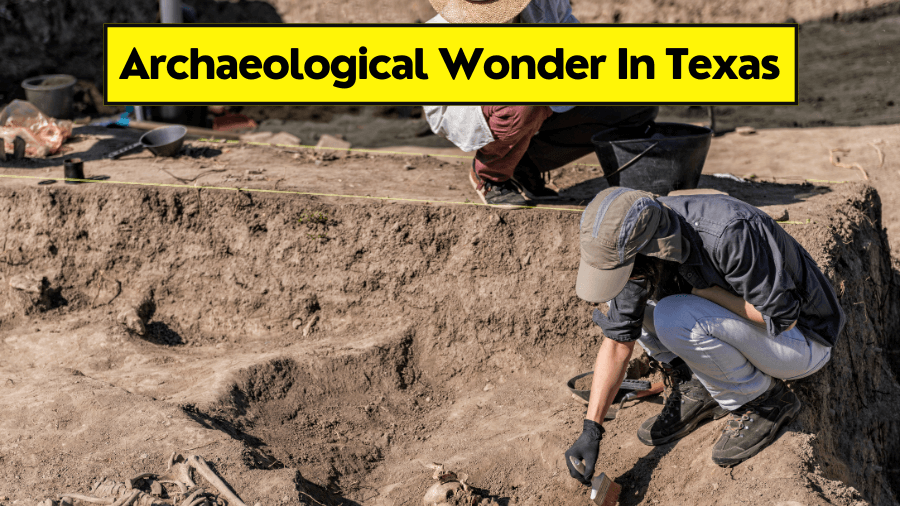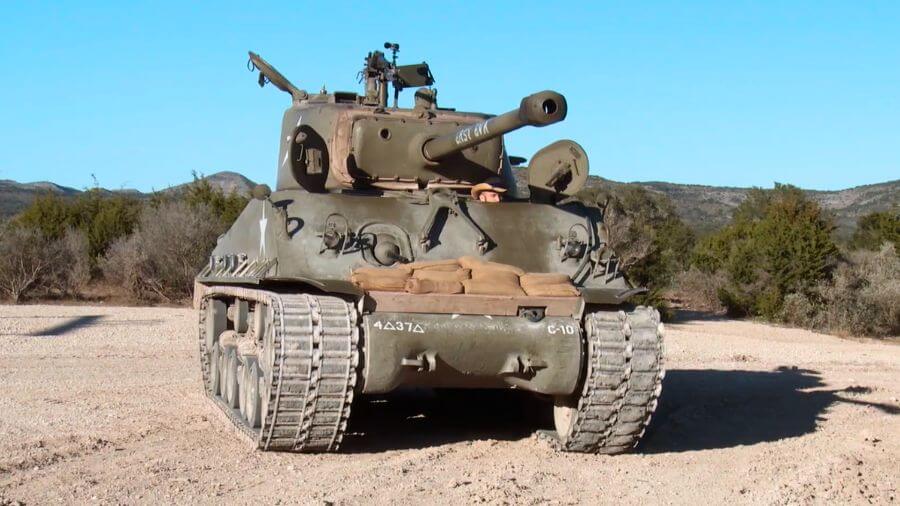Texas has seen its fair share of battles, outlaws, and frontier drama, and there’s no better way to experience that history than by visiting its old forts.
Some were built to protect settlers from raids, others trained soldiers for wars overseas, and a few even witnessed legendary last stands that shaped the state’s future.

You can walk through desert ruins, visit stone fortresses that once protected the coast, or step inside barracks where Buffalo Soldiers and cavalry troops lived over a century ago.
If you love military history, old battle sites, or exploring places with incredible stories, these historic forts are must-visit stops across Texas.
1. Fort Davis National Historic Site

Fort Davis National Historic Site sits in the rugged mountains of West Texas and was once a key military post protecting travelers on the San Antonio-El Paso Road in the 1800s.
It was home to the Buffalo Soldiers, African American troops who defended settlers, mail coaches, and wagon trains from raids.
Today, you can walk through restored officer’s quarters, peek inside the old hospital, and explore the ruins of barracks where soldiers once slept under the harsh desert sky.
With hiking trails leading up to stunning viewpoints and daily reenactments bringing history to life, this fort feels like stepping straight into the Wild West.
2. Fort Leaton State Historic Site
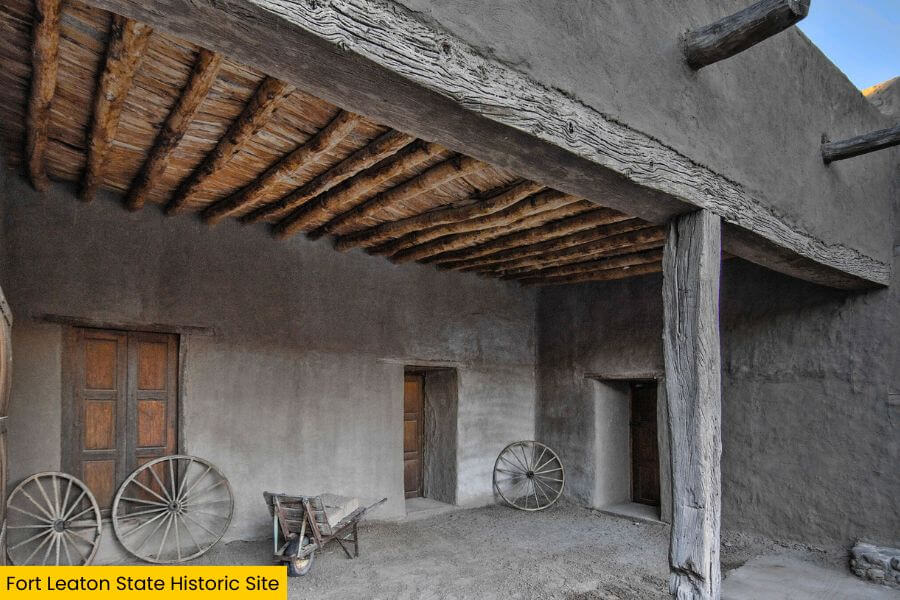
Fort Leaton State Historic Site, located on the U.S.-Mexico border near Presidio, is a massive adobe fortress that started as a private trading post in the 1840s.
Unlike most military forts, this one was built by a businessman named Ben Leaton, who ran a trade empire here.
He also operated as a bounty hunter and became known for his ruthless dealings.
You can wander through thick-walled rooms filled with old wagons, tools, and artifacts, walk the sunbaked courtyard where traders once gathered, and see the original wooden doors that have stood for over 150 years.
With its towering adobe walls and remote desert setting, this place feels like it’s straight out of an old Western movie—minus the gunfights.
3. Fort Martin Scott State Historic Site
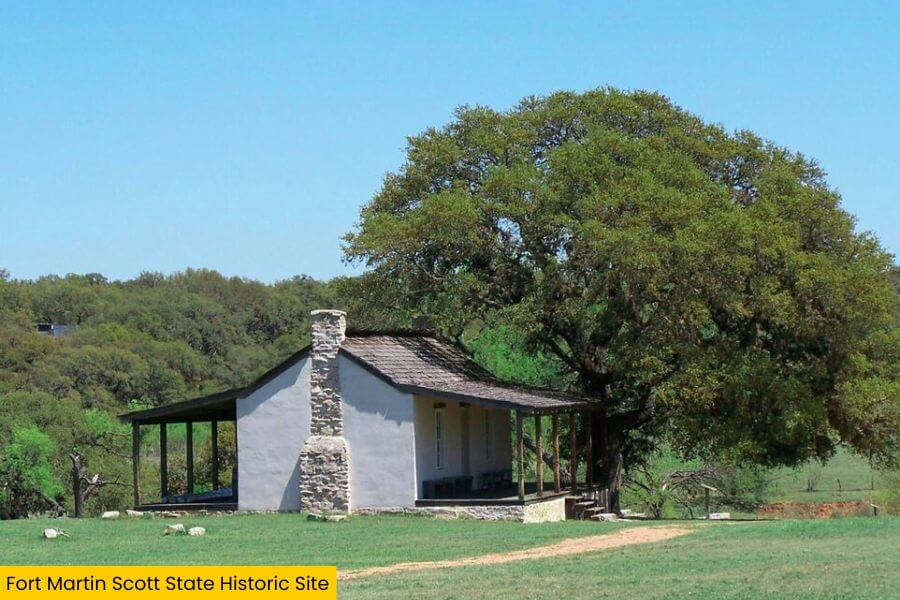
Fort Martin Scott State Historic Site, just outside Fredericksburg, was the first U.S. Army fort built on the Texas frontier in the 1840s.
It was established to maintain peace between settlers and Native American tribes, with soldiers patrolling the open plains and protecting wagon routes.
Today, you can walk through reconstructed barracks, check out an old log guardhouse, and see exhibits on frontier life, including the tough conditions soldiers faced in this remote outpost.
Since it’s right off the famous Texas Wine Trail, it’s the perfect quick stop to soak up some history before heading into town for BBQ and a glass of local wine.
4. Fort San Jacinto Historic Point

Fort San Jacinto Historic Point in Galveston once stood as a coastal defense post, protecting Texas from enemy ships, while the later extensions of the seawall helped shield the area from hurricanes.
Originally built in the 1800s and later reinforced during World War II, the fort played a key role in guarding Galveston Bay with massive artillery guns aimed at the Gulf of Mexico.
Now, most of the original structures are gone, but you can still visit the site, enjoy the waterfront views, and picture what it was like when soldiers watched over the coast.
Since it’s right near Galveston’s beaches and Seawall, it’s a perfect spot to stop for a quick history break before grabbing fresh seafood or relaxing on the sand.
5. The Alamo

The Alamo, in the heart of San Antonio, is one of the most famous landmarks in Texas and the site of the legendary 1836 battle for Texas independence.
This historic Spanish mission-turned-fortress is where a small group of Texan defenders, including Davy Crockett and James Bowie, held off the Mexican army for 13 days before being overwhelmed.
Today, you can visit the original church where the final stand took place, see artifacts like Bowie knives and muskets, and stroll through the gardens that surround the historic walls.
With its dramatic history and legendary figures, the Alamo isn’t just a place to visit—it’s a story that every Texan and history fan should know about.
Related Reading:
6. Fort Wolters
Fort Wolters, located near Mineral Wells, began as a Texas National Guard training camp in the 1920s before becoming a major military helicopter training base during the Vietnam War.
Thousands of pilots trained here, making it one of the most important helicopter training facilities in U.S. history.
You can visit the Fort Wolters Historical Park to see old military equipment, check out the stone entrance gates from the original camp, and learn about the base’s role in training soldiers for combat.
If you’re into military history or aviation, this spot provides a unique look at the place where many helicopter pilots took their first flight.
7. Fort Griffin State Historic Site

Fort Griffin State Historic Site, sitting along the Clear Fork of the Brazos River, was one of the roughest frontier posts in Texas during the 1800s.
This fort wasn’t just a military outpost—it stood near a lively settlement called ‘The flat’ that attracted lawmen, outlaws, buffalo hunters, and even famous figures like Wyatt Earp and Doc Holliday.
Today, you can walk among the ruins of old barracks and a mess hall, see the ruins of officer’s quarters, and visit the official Texas Longhorn herd that still roams the land.
With its mix of frontier history and open prairie views, Fort Griffin feels like a step back into the days when Texas was untamed.
8. Historic Fort Phantom Hill
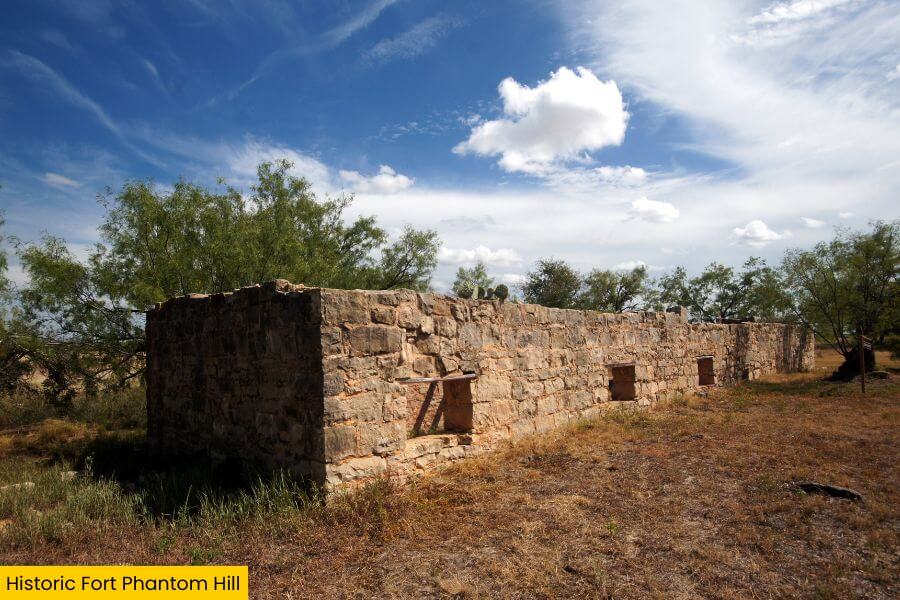
Historic Fort Phantom Hill, just north of Abilene, feels more like a ghost town than a fort, with crumbling stone chimneys and scattered ruins standing alone on the Texas plains.
Built in the 1850s to protect settlers and trade routes, the fort was abandoned just a few years later.
Its eerie name comes from uncertain origins, with theories pointing to mirages or ghostly sightings.
You can wander through the remains of the guardhouse, officers’ quarters, and old stone foundations while imagining life in this harsh, remote outpost.
With little modern intrusion and no large visitor center, this place feels untouched by time, making it one of the most unique and haunting historic spots in Texas.
9. Presidio la Bahía State Historic Site

Presidio La Bahía State Historic Site in Goliad is a fully restored Spanish fort that played a huge role in Texas history, especially during the Texas Revolution.
Built in the 1700s, it was the site of the infamous Goliad Massacre in 1836, where hundreds of Texan soldiers were executed after surrendering to the Mexican army.
Today, you can explore the thick stone walls, explore the chapel that has been standing for over 250 years, and see exhibits filled with weapons, uniforms, and stories from the fort’s history.
Since it’s one of the best-preserved Spanish forts in the country, standing inside feels like stepping straight into the past—minus the danger.
10. Fort McKavett State Historic Site
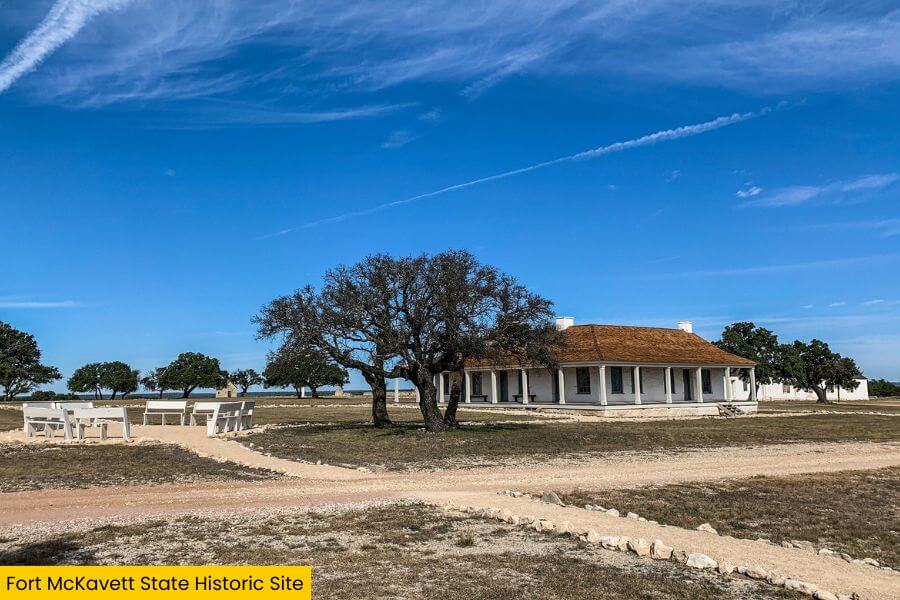
Fort McKavett State Historic Site, located about 70 miles drive from San Angelo, is one of the best-preserved 1800s military forts in the state.
Built to protect settlers from raids, it later became home to Buffalo Soldiers and cavalry troops who patrolled the vast Texas frontier.
You can explore over a dozen original buildings, including the barracks, hospital, and officers’ quarters.
It’s full of artifacts that show what life was like for soldiers stationed in the middle of nowhere.
With wide-open skies, rolling hills, and ruins that seem stuck in time, this fort feels like a hidden piece of Old West history just waiting to be explored.
11. Fort Bliss Museum
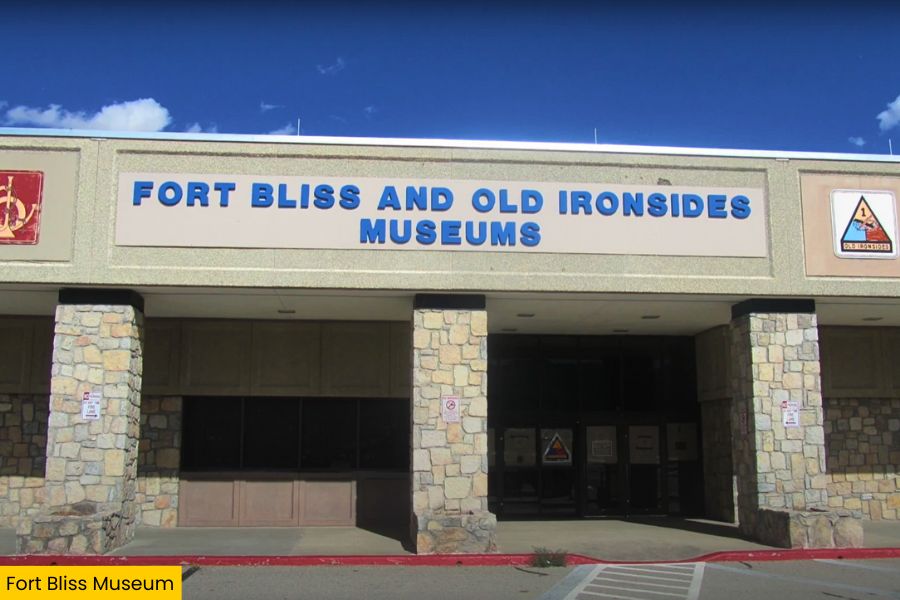
Fort Bliss Museum in El Paso tells the story of one of the largest and most important military bases in the country, from its early days as a frontier post to its role in modern warfare.
The museum showcases everything from old cavalry gear to massive tanks and helicopters, providing a full view at how the U.S. Army has evolved over the years.
It’s closed for remodeling at the time of writing, but when it reopens in summer 2025, you will be able to see its impressive collection of weapons, uniforms, and historic military vehicles.
In the meantime, Fort Bliss remains an active base, and even driving past the entrance gives you a sense of the sheer size and history of this legendary post.
12. Fort Lancaster State Historic Site

Fort Lancaster State Historic Site sits in a remote stretch of West Texas, where soldiers once guarded wagon trains traveling through the wild, open frontier.
Unlike other forts with towering stone walls, this one was mostly an open post.
Today, only scattered ruins—crumbled barracks, a lone chimney, and weathered foundations remain.
You can walk the trails past what used to be the officers’ quarters, the blacksmith shop, and even the fort’s old bakery, all while soaking in the quiet, empty landscape that still feels untouched.
With little modern development around, it’s easy to picture what it was like when soldiers stood watch over the harsh, open land.
13. Fort Concho National Historic Landmark
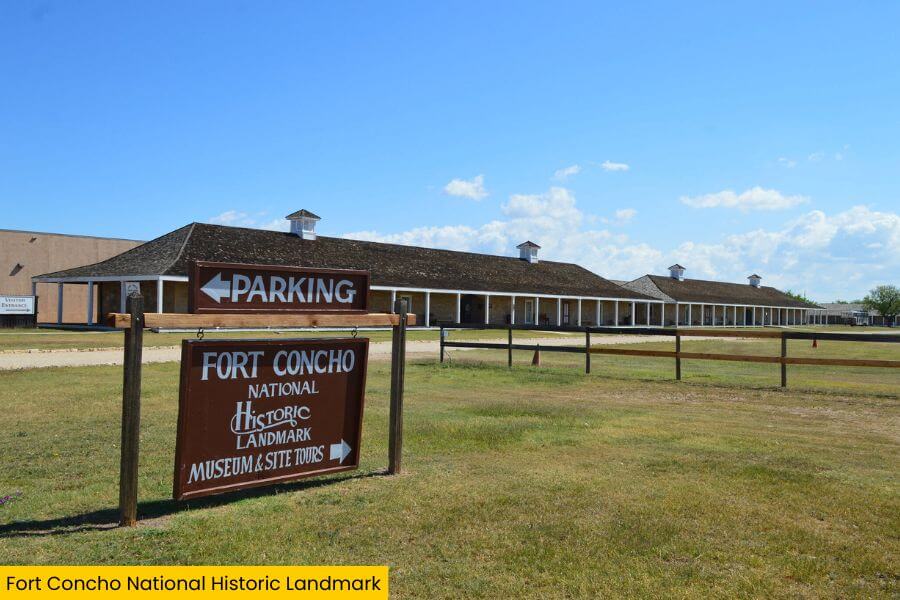
Fort Concho National Historic Landmark in San Angelo is one of the best-preserved frontier forts in Texas, with more than 20 original and restored buildings.
From the 1860s to the 1880s, this fort was home to Buffalo Soldiers, cavalry troops, and scouts who protected West Texas from raids and bandits.
Today, you can tour the old barracks, check out the officer’s quarters filled with period furniture, and step inside the chapel and schoolhouse.
With year-round reenactments, festivals, and even a Christmas celebration with candlelit tours, this fort doesn’t just tell history—it brings it to life.
Related Posts


